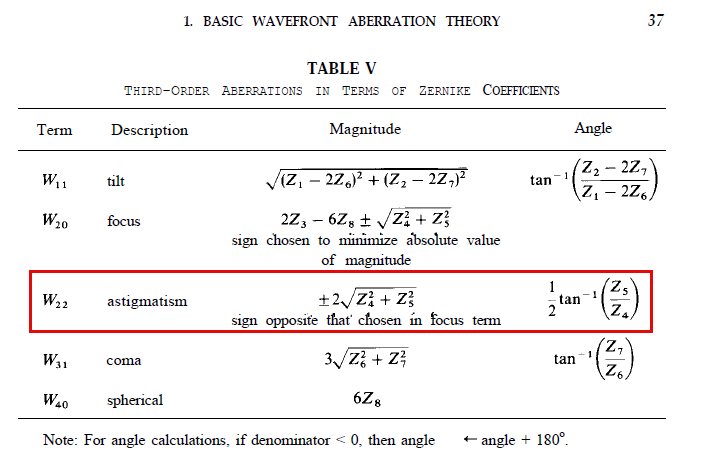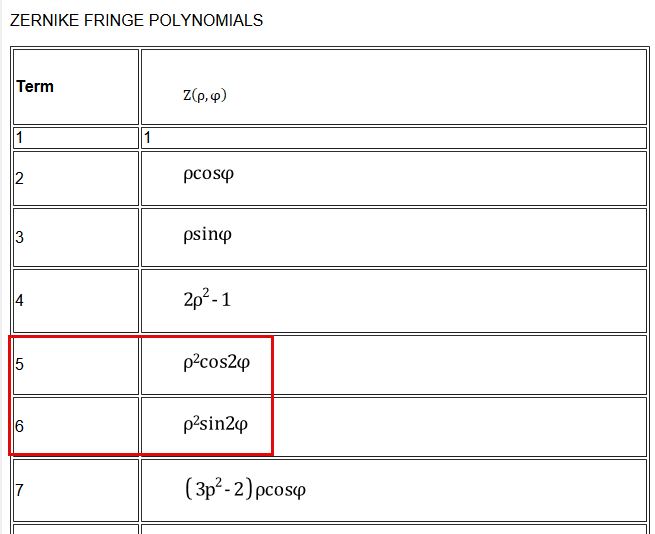Hi,
I tried to evaluate astigmatism of curved tilted mirror in sequential mode. Astigmatism is obvious, but Seidel coefficients are zero. Also in Merit Function Editor parameter “ASTI” returns zero. Maybe the reason is that Seidel coefficients ignore the coordinate breaks for tilting.
Did not find any topic describing this fact.
Does anyone have a solution for getting Astigmatism of focusing system with tilted objects?
Astigmatism of tilted mirror
Best answer by Jeff.Wilde
Yes, the Seidel Coefficients intrinsically assume a rotationally symmetric optical system, and therefore Zemax ignores coordinate breaks when calculating them.
So, you may want to try using Zernike Fringe Coefficients Z4 & Z5 as defined in “Basic Wavefront Aberration Theory for Optical Metrology” by J. C. Wyant and K. Creath, Ch. 1, Applied Optics & Optical Engineering, Vol. XI, 1992.

The table below shows how to compute astigmatism given these two coefficients.

Note that the Zernike Fringe Coefficients in Zemax are numbered differently than shown above. In this case you would want to use the Z5 & Z6 coefficients that Zemax provides:

These coefficients can be found by going to: Analyze > Wavefront > Zernike Fringe Coefficients.
Regards,
Jeff
Enter your E-mail address. We'll send you an e-mail with instructions to reset your password.



